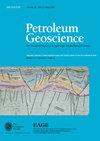Simultaneous Well Spacing and Completion Optimization Using Automated Machine Learning Approach. A Case Study of Marcellus Shale Reservoir in the North-Eastern United States
IF 2.1
4区 地球科学
Q3 GEOSCIENCES, MULTIDISCIPLINARY
引用次数: 0
Abstract
Optimizing unconventional field development requires simultaneous optimization of well spacing and completion design. However, the conventional practice of using cross plots and sensitivity analysis via Monte Carlo simulations (MCS) for independent optimization of well spacing and completion design has proved inadequate for unconventional reservoirs. This is due to the inability of cross plots to capture non-linear cross-correlations between parameters affecting hydrocarbon production, and the computational expense and difficulty of Monte Carlo simulations. Recently, automated machine learning (AutoML) workflows have been used to tackle complex problems. However, applying AutoML workflows to engineering problems presents unique challenges, as achieving high accuracy in forecasting the physics of the problem is crucial. To address this issue, a new physics-informed AutoML workflow based on the TPOT open-source tool developed that guarantees the physical plausibility of the optimum model while minimizing human bias and uncertainty. The workflow has been implemented in a Marcellus Shale reservoir with over 1,500 wells to determine the optimal well spacing and completion design parameters for both the field and each well. The results show that using a shorter stage length (SSL) and a higher sand-to-water ratio (SWR) is preferable for this field, as it can increase cumulative gas production by up to 8%. Additionally, it is observed that fifty-percentile cumulative gas predictions are in close agreement with actual field productions. Thematic collection: This article is part of the Digitally enabled geoscience workflows: unlocking the power of our data collection available at: https://www.lyellcollection.org/topic/collections/digitally-enabled-geoscience-workflows使用自动机器学习方法同时优化井距和完井。美国东北部马塞勒斯页岩油藏案例研究
优化非常规油田开发需要同时优化井距和完井设计。然而,通过蒙特卡罗模拟(MCS)使用交叉图和敏感性分析来独立优化井距和完井设计的传统做法已被证明不适用于非常规储层。这是由于交叉图无法捕捉影响碳氢化合物生产的参数之间的非线性交叉关系,以及蒙特卡罗模拟的计算费用和难度。最近,自动机器学习(AutoML)工作流程被用于解决复杂问题。然而,将 AutoML 工作流程应用于工程问题却面临着独特的挑战,因为实现对问题物理预测的高精度至关重要。为了解决这个问题,我们在 TPOT 开源工具的基础上开发了一种新的物理信息 AutoML 工作流,它能保证最佳模型的物理可信度,同时最大限度地减少人为偏差和不确定性。该工作流程已在一个拥有 1,500 多口井的马塞勒斯页岩油藏中实施,以确定油田和每口井的最佳井距和完井设计参数。结果表明,对于该油田来说,使用较短的阶段长度(SSL)和较高的砂水比(SWR)更为可取,因为这样可以将累计天然气产量提高 8%。此外,还观察到五十百分位数的累积天然气预测值与实际气田产量非常接近。 专题集锦:本文是 "数字化地球科学工作流程:释放数据收集的力量 "的一部分,可从以下网址获取: https://www.lyellcollection.org/topic/collections/digitally-enabled-geoscience-workflows
本文章由计算机程序翻译,如有差异,请以英文原文为准。
求助全文
约1分钟内获得全文
求助全文
来源期刊

Petroleum Geoscience
地学-地球科学综合
CiteScore
4.80
自引率
11.80%
发文量
28
审稿时长
>12 weeks
期刊介绍:
Petroleum Geoscience is the international journal of geoenergy and applied earth science, and is co-owned by the Geological Society of London and the European Association of Geoscientists and Engineers (EAGE).
Petroleum Geoscience transcends disciplinary boundaries and publishes a balanced mix of articles covering exploration, exploitation, appraisal, development and enhancement of sub-surface hydrocarbon resources and carbon repositories. The integration of disciplines in an applied context, whether for fluid production, carbon storage or related geoenergy applications, is a particular strength of the journal. Articles on enhancing exploration efficiency, lowering technological and environmental risk, and improving hydrocarbon recovery communicate the latest developments in sub-surface geoscience to a wide readership.
Petroleum Geoscience provides a multidisciplinary forum for those engaged in the science and technology of the rock-related sub-surface disciplines. The journal reaches some 8000 individual subscribers, and a further 1100 institutional subscriptions provide global access to readers including geologists, geophysicists, petroleum and reservoir engineers, petrophysicists and geochemists in both academia and industry. The journal aims to share knowledge of reservoir geoscience and to reflect the international nature of its development.
 求助内容:
求助内容: 应助结果提醒方式:
应助结果提醒方式:


